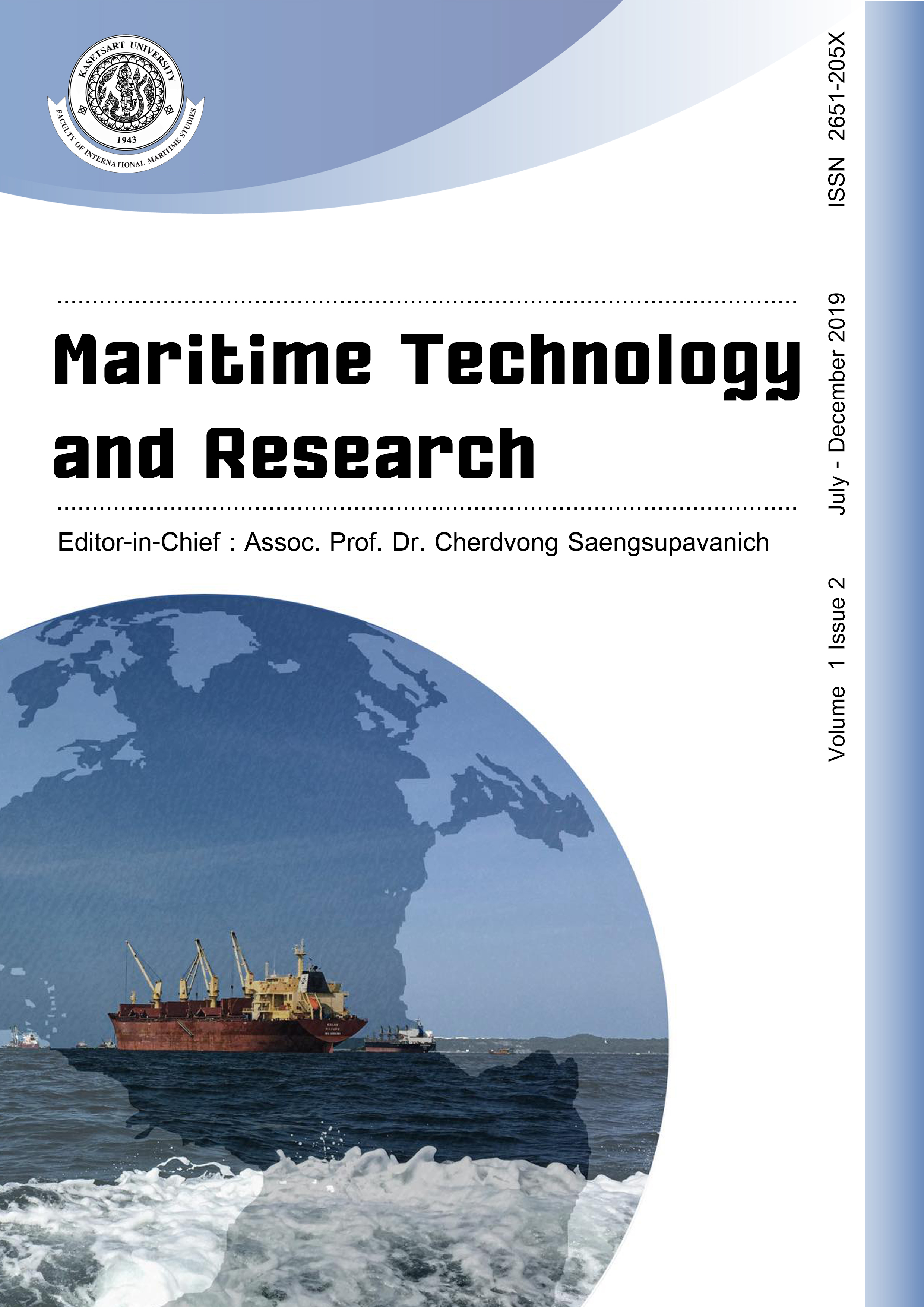Species identification of processed sea cucumbers from Malaysian market based on concatenated gene sequences of mitochondrial rRNA genes
DOI:
https://doi.org/10.33175/mtr.2019.146259Keywords:
12S rRNA gene, 16S rRNA gene,, Malaysian markets, Processed sea cucumbers, Phylogenetic analysisAbstract
Species identification of sea cucumbers that have undergone body deformation due to extensive food processing, e.g., beche-de-mer, is difficult, especially with the copresence of cases of unlabelled or mislabelled sea cucumber-based products on the market. Therefore, a study was done to determine the species identities of processed sea cucumbers from selected Malaysian markets using concatenated gene sequences of non-protein-coding 12S and 16S mitochondrial rRNA genes. Phylogenetic analyses, based on the distance-based Neighbor Joining method and character-based methods, i.e., the Maximum Parsimony method, Maximum Likelihood method, and the Bayesian Analysis method, of 47 ingroup sequences, representing 37 processed sea cucumber specimens, 6 reference samples, and 4 additional specimens, suggested the presence of 3 main clusters, i.e., gamat family, consisting of genus Stichopus and genus Thelenota; and timun laut family, comprising family Holothuriidae. A number of 3 gamat species, i.e., Stichopus horrens, Stichopus vastus, and Thelenota anax, were recorded. Meanwhile, the specimens of Holothuria (Halodeima) atra, Holo-thuria (Halodeima) edulis, Holothuria (Metriatyla) lessoni, Holothuria (Merten-siothuria) leucospilota, and Holothuria (Metriatyla) scabra were the 5 timun laut species that are grouped under the family Holothuriidae. The outcomes of this study can be utilised by enforcement agencies to monitor and overcome the issues of species substitution and product mislabelling of processed sea cucumber products in Malaysian markets.
References
Clouse, R., Janies, D., & Kerr, A. M. (2005). Resurrection of Bohadschia bivittata from B. marmorata (Holothuroidea: Holothuriidae) based on behavioral, morphological, and mitochondrial DNA evidence. Zoology 108(1), 27-39. doi:10.1016/j.zool.2004.07.007
Conand, C., Polidoro, B., Mercier, A., Gamboa, R., Hamel, J. F., & Purcell, S. (2014). The IUCN Red List assessment of aspidochirotid sea cucumbers and its implications. SPC Beche-de-mer Information Bulletin 34(5), 3-7.
Dabbagh, A. R, Keshavarz, M., Mohammadikia, D., Afkhami, M., & Nateghi, S. A. (2012). Holothuria scabra (Holothuroidea: Aspidochirotida): First record of a highly valued sea cucumber, in the Persian Gulf, Iran. Marine Biodiversity Records 5(8), e69. doi:10.1017/S1755267212000620
Freeman, S., & Herron, J. C. (2004). Evolutionary Analysis. 3rd ed. Upper Saddle River, NJ: Pearson/Prentice Hall.
Huelsenbeck, J. P., & Ronquist, F. (2001). MRBAYES: Bayesian inference of phylogeny. Bioinformatics 17(8), 754-755. doi:10.1093/bioinformatics/17.8.754
Kamarudin, K. R. (2018). Species Identification, Molecular Phylogenetic and Genetic Diversity of Sea Cucumber (Phylum Echinodermata: Class Holothuroidea) in Malaysia. Ph.D. Thesis, Universiti Sains Islam Malaysia, Nilai, Negeri Sembilan, Malaysia.
Kamarudin, K. R., Mohamed, M. R., & Bahaman, N. A. (2017). Morphological and molecular identification of ossicle shapes in sea cucumber species Holothuria scabra, Stichopus horrens and Stichopus ocellatus from Kudat, Sabah, Malaysia. Pertanika Journal of Tropical Agricultural Science 40(1), 161-172.
Kamarudin, K. R., Mohamed, M. R., Mohd, H. N., Ramly, N. Z., & Mohamed, A. R. (2017). Comparison of ossicle shape and 12S rRNA gene sequencing techniques for species identification of gamat-based beche-de-mer from Langkawi Archipelago, Kedah Darul Aman. Pertanika Journal of Tropical Agricultural Science 40(2), 91-104.
Kumar, S., Stecher, G., & Tamura, K. (2016). MEGA7: Molecular evolutionary genetics analysis version 7.0 for bigger datasets. Molecular Biology and Evolution 33(7), 1870-1874. doi:10.1093/molbev/msw054
Massin, C., Zulfigar, Y., Hwai, T. S., & Boss, S. Z. (2002). The genus Stichopus (Echinodermata: Holothuroidea) from the Johore Marine Park (Malaysia) with the description of two new species. Bulletin de l’Institut royal des Sciences naturelles de Belgique 72, 73-99.
Page, R. D. M. (1996). TREEVIEW: An application to display phylogenetic trees on personal computers. Bioinformatics 12(4), 357-358. doi:10.1093/bioinformatics/12.4.357
Palumbi, S., Martin, A., Romano, S., McMillan, W. O., Stice, L., & Grabowski, G. (1991). The Simple Fool’s Guide to PCR. Department of Zoology and Kewalo Marine Laboratory, Universiti of Hawaii, Honolulu.
Posada, D., & Buckley, T. R. (2004). Model selection and model averaging in phylogenetics: Advantages of akaike information criterion and bayesian approaches over likelihood ratio tests. Systematic Biology 53(5), 793-808. doi:10.1080/10635150490522304
Posada, D., & Crandall, K. A. (1998). Modeltest: Testing the model of DNA substitution. Bioinformatics 14(9), 817-818. doi:10.1093/bioinformatics/14.9.817
Rasmussen, R. S., & Morrissey, M. T. (2008). DNA-based methods for the identification of commercial fish and seafood species. Comprehensive Reviews in Food Science and Food Safety 7(3), 280-295. doi:10.1111/j.1541-4337.2008.00046.x
Swofford, D. L. (1998). “PAUP”, Phylogenetic Analysis Using Parsimony (*and other methods), version 4. Sinauer Associates, Sunderland, MA.
Tamura, K., Nei, M., & Kumar, S. (2004). Prospects for inferring very large phylogenies by using the neighbor-joining method. Proceedings of the National Academy of Sciences of the United States of America 101(30), 11030-11035. doi:10.1073/pnas.0404206101
Thompson, J. D., Gibson, T. J., Plewniak, F., Jeanmougin, F., & Higgins, D. G. (1997). The ClustalX windows interface: Flexible strategies for multiple sequence alignment aided by the quality analysis tools. Nucleic Acids Research 25(24), 4876-4882. doi:10.1093/nar/25.24.4876
Wen, J., Hu, C., Zhang, L., & Fan, S. (2011). Genetic identification of global commercial sea cucumber species on the basis of mitochondrial DNA sequences. Food Control 22(1), 72-77. doi:10.1016/j.foodcont.2010.06.010
Wen, J., Hu, C., Zhang, L., Luo, P., Zhao, Z., Fan, S., & Su, T. (2010). The application of PCR-RFLP and FINS for species identification used in sea cucumbers (Aspidochirotida: Stichopodidae) products from the market. Food Control 21(4), 403-407. doi:10.1016/j.foodcont.2009.06.014
Downloads
Published
How to Cite
Issue
Section
License
Copyright: CC BY-NC-ND 4.0






